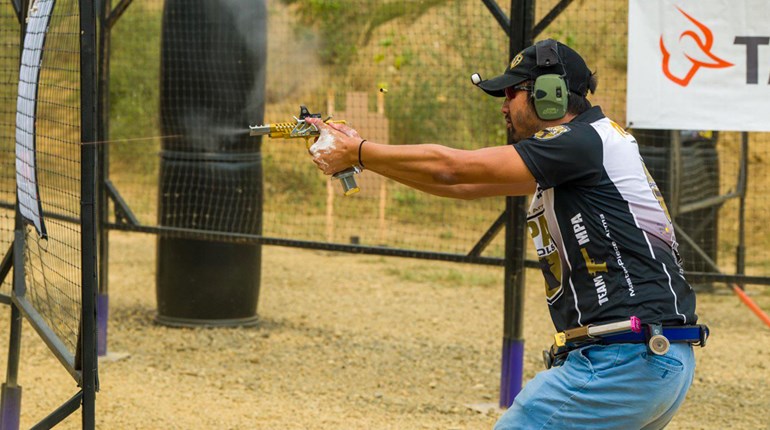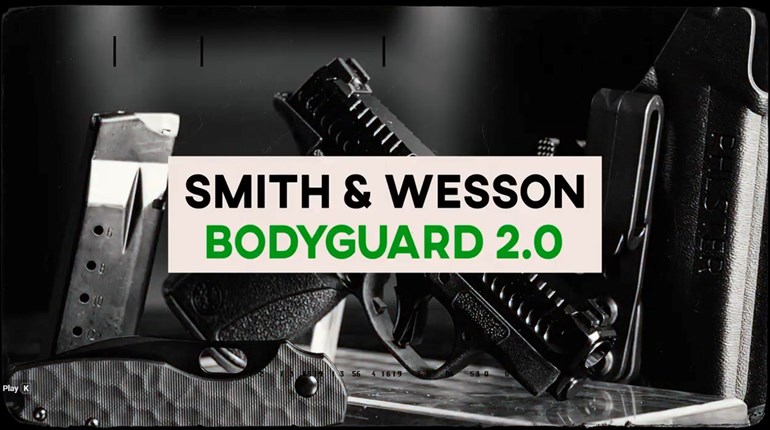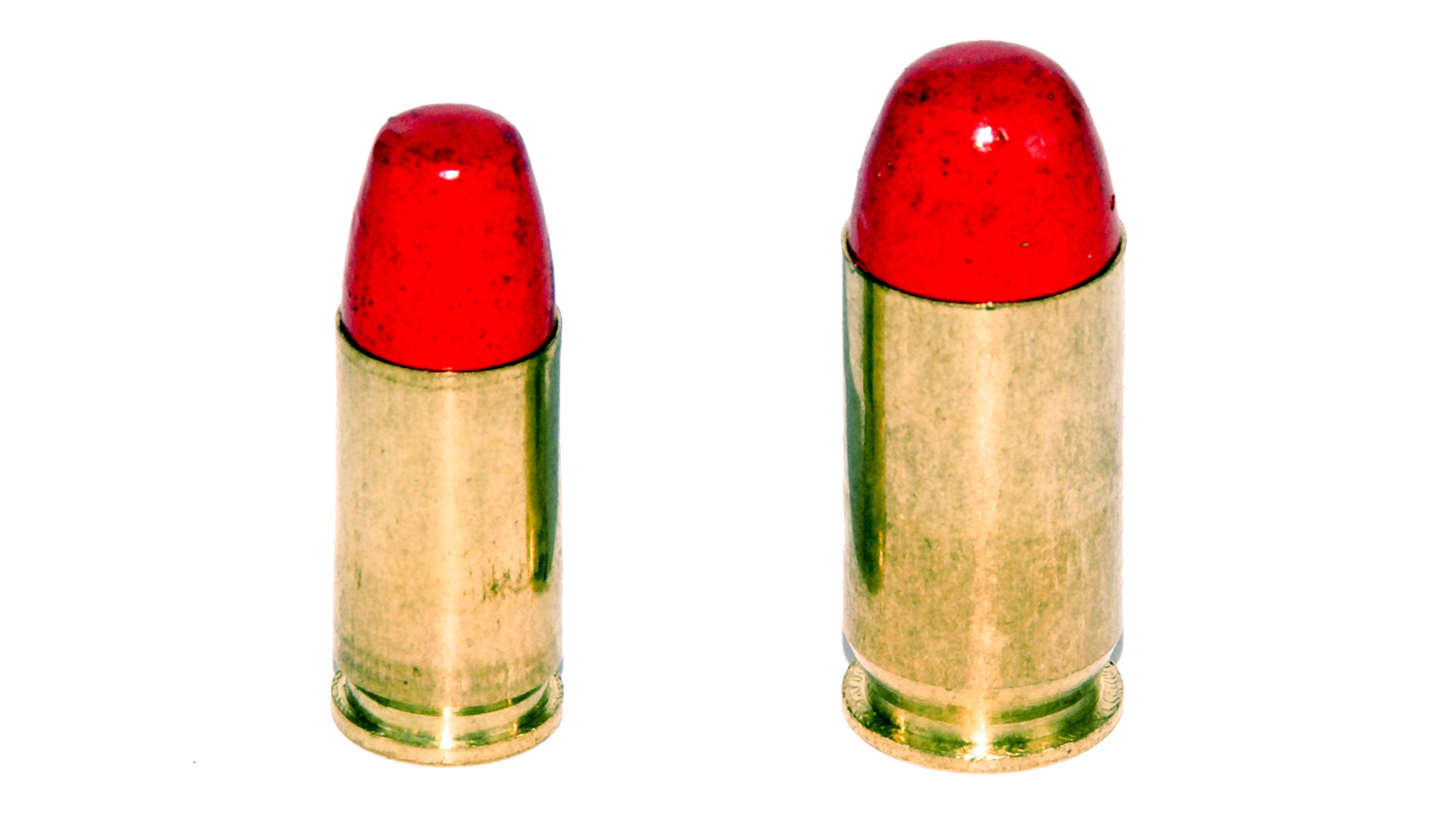
It’s commonly assumed that competitive shooters are also reloaders. That’s not always true. Some shooters purchase their match loads over-the-counter. Federal has entered that market with their Syntech loads.

Available in 50-round boxes, the loads are designated as Action Pistol or Range Ammunition. They feature Federal’s new Total Synthetic Jacket (TSJ), lead-free Catalyst primers, and fast-burning powders. The Action Pistol line consists of 150-grain 9mm, .40 S&W 205-grain, and .45 ACP 220-grain bullets. They are claimed to make the required Power Factor for USPSA and IDPA with less recoil than standard loads. The Range Ammunition is designed for practice (although it could certainly be used for matches) and consists of 9mm in 115- and 124-grains, and a 230-grain .45 ACP load. MSRP for a 50-round box ranges from $19 to $31, depending on caliber.
Lacking a suitable .40 S&W pistol I only tested the 9mm and .45 ACP. The provided loads consisted of Action Pistol 150-grain 9mm, Action Pistol 220-grain .45 ACP, and Range Ammunition in 115-grain 9mm and 230-grain .45 ACP.
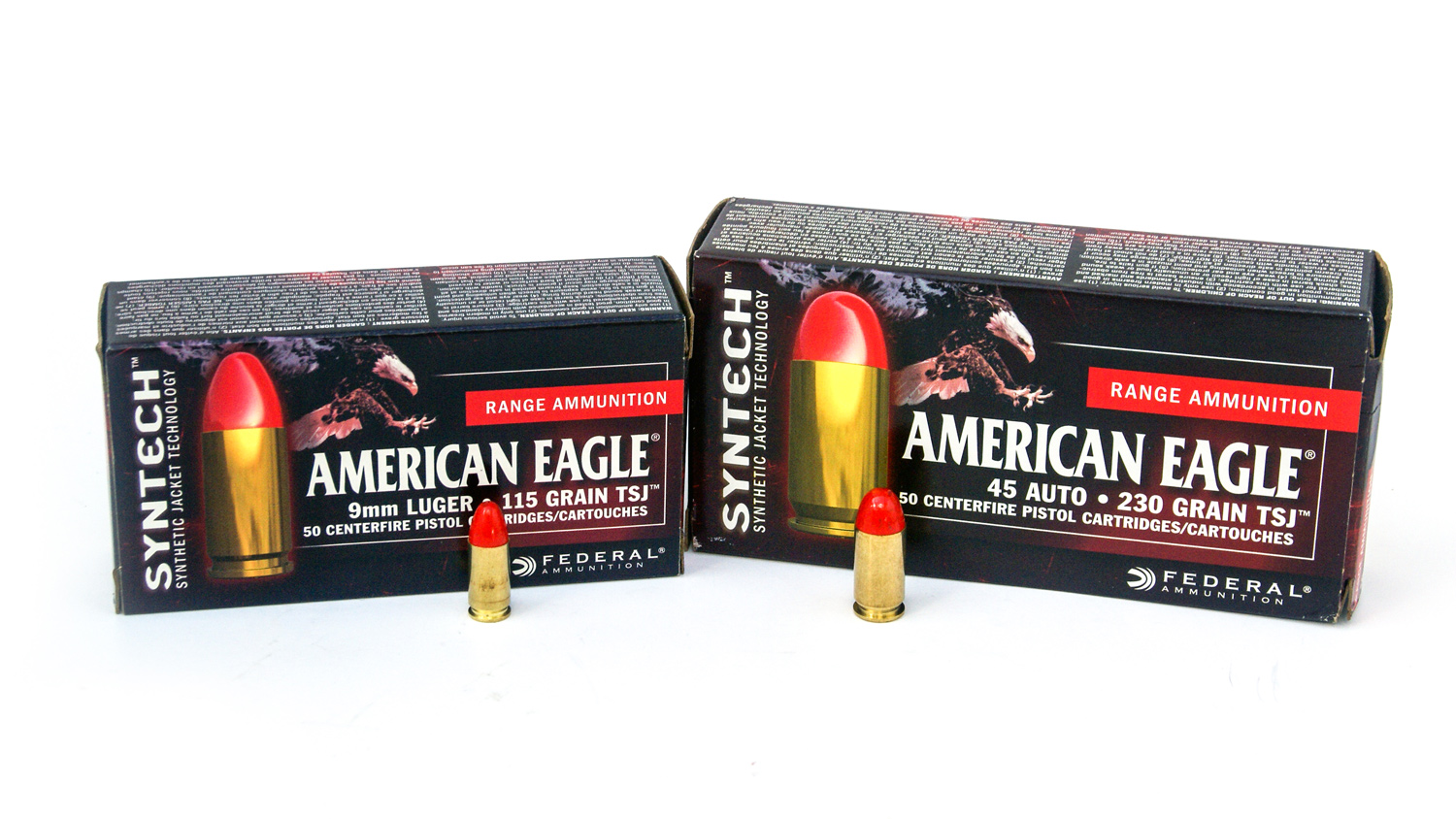
The test procedure was to accuracy test from a 25-yard benchrest. Since the Syntech Action Pistol loads are advertised as making the appropriate Power Factors (PF) for USPSA and IDPA, I chronographed them. Since the Oehler 3 Screen chrono was set up, I also shot the others for comparison.
The chronograph procedures for USPSA and IDPA differ slightly. Both organizations fire three rounds over the Match Chronograph. In USPSA, the velocities of the three are averaged to establish a PF. In IDPA two of the three rounds must make the required PF.
It is theoretically possible for a load to pass USPSA and not IDPA. Two “low” rounds in USPSA could be offset by one “high” round to “average.” But two “low” rounds would flunk IDPA. I fired three rounds, made the average, and noted whether two of the three met IDPA requirements.
Testing
For test guns I used four of my match guns. All have spent a lot of time on a 25-yard benchrest testing various factory ammo and handloads. That’s given me a large database on what they’ll do at their best and worst. Here’s how they fared with the Syntech loads, and where they fell on the Power Factor scale for USPSA and IDPA.
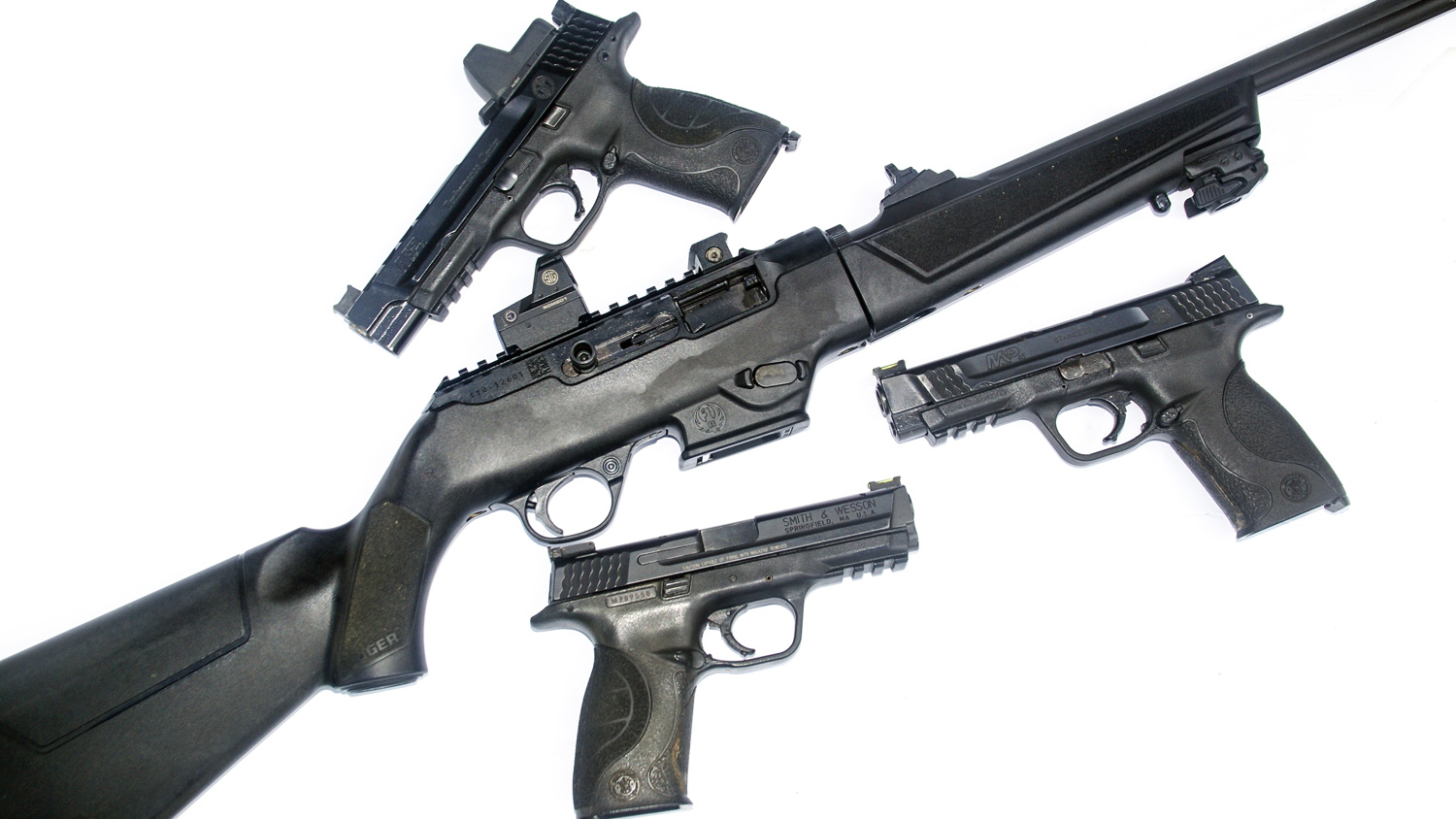
Smith & Wesson M&P .45 ACP Standard (4.5-inch barrel 1:15-inch twist, stock except for aftermarket adjustable sights and a 3.5-pound trigger job). The most accurate load I’ve found for this gun will do about 2.25 inches. The rest are in the 2.5 to 3.0-inch range. A 165 PF is required for USPSA Major caliber, and for IDPA CDP.
The Syntech 220 load equaled the most accurate loads with 2.24-inch 5-round groups, and with recoil as soft as any of my handloads. The 230-grain load averaged 3.1 inches. Normal for this gun with 230 bullets.
Federal lists the 220-grain Action Pistol load velocity at 775 fps (170 PF). I suspect that figure was taken from the commonly-used 5-inch 1911, because the 4.5-inch barrel on the M&P produced 754, 761 and 749. The average was 754 (166 PF). Two rounds did make 165 for IDPA. A 5-inch barrel would likely have added the velocity needed to make the listed 775 fps.
The stated velocity on the 230 Syntech load is 830 fps. I got 772,784 and 786 (179 PF) which is USPSA/IDPA legal. Recoil was less than standard 230 loads.
Smith & Wesson M&P 9mm Standard (4.25-inch barrel 1:10-inch twist, stock except for adjustable sights and a 3.5-pound trigger job). The loads this gun likes best will run 2.35-2.50 inches. The rest are at the 2.75-3.00-inch range. The 115 Syntech did 2.76. That’s very acceptable. The 150 load did 2.41, which is as good as this gun will do with any load.
Minor caliber in USPSA/IDPA is 125 PF. The stated velocity on the 115 load is 1130 fps (129.99 PF). I got 1099, 1115 and 1080. The average was 1098 (126 PF). Two rounds did make IDPA. The 150 load is listed at 870 fps. I got 897, 893, 895 (average 134 PF) and all were IDPA-legal. This load actually produced less recoil than the 115.
Smith & Wesson M&P C.O.R.E. 9mm (5-inch KKM barrel that is slower than 1:10-inch twist, about 1:16-inch twist, Trijicon RMR reflex sight, and a 2.75-pound trigger job). This gun will deliver 2-inch groups with my 124-grain handloads, and about 3 inches with slower (880 fps) 147-grain loads. The 150 load produced “normal” 2.9-inch groups. The groups for the 115 were vertically-strung over 3.7 inches. The horizontal dispersion was about .5 inches. It was a line of bullet holes walking up the target face. Had I been shooting only that gun and load I might conclude it was me. But this was the last handgun group fired, the 150 load was normal, and I was dialed in. Given how well the load shot in the 1:10-inch twist M&P and in the 1:10-inch twist Ruger PC, I can only conclude that this KKM slower twist barrel doesn’t like this 115-grain load.
On the chronograph the 115 went 1164, 1168 and 1174 (134 PF). The 150 went 930, 933 and 929 (139 PF). All were USPSA/IDPA legal.
Ruger 9mm PC Carbine (1:10-inch twist, stock gun with a 6 MOA SIG ROMEO1 reflex sight). Previous accuracy testing was done with 3-shot groups. The most accurate load tested in the PC was 1.24 inches. Most were in the 1.5 to 1.65 range. Given the radically-new Syntech jacket I tested these loads with 5-round groups.

The 115 Syntech did 1.37; better than average. Velocity from the 16.12-inch barrel was 1266, 1271 and 1277 (146 PF).
The 150 did 1.23 inches, slightly exceeding the best load I’ve found. And this was 5-round groups instead of three rounds. The velocity was 1037, 1039 and 1041 (155 PF).
Given the PF, the recoil of the 150-grain load was surprising. There wasn’t much! Put the dot on the target, pull the trigger, and watch the dot move up about an inch or so. This was not only the most accurate load I’ve found for the PC, but also the softest shooting. I was impressed. I also had a 6-stage Sanctioned Steel Challenge match scheduled, with enough of the 150-grain load left over to shoot it.
At the match I bested my current Classifier times on five of the six stages, and moved up four percentage points in PCCO A Class.

Any experienced Steel Challenge competitor will tell you that’s a huge jump (especially for an A Class shooter) in a single match! I have to credit the Syntech load for that. And, given how well it performed in the two handguns, I’d also have to say this is the best factory “heavy bullet” 9mm load I’ve tested to date.
During the tests there were no malfunctions of any type, with any load, and with any of the four guns. Ejection was normal and positive. Barrel cleaning was easy—there was nothing but a bit of powder fouling. The TSJ jacket runs as clean as advertised.
If you buy your match ammo over-the-counter, Syntech can get you to Master class. You just have to do your part.













